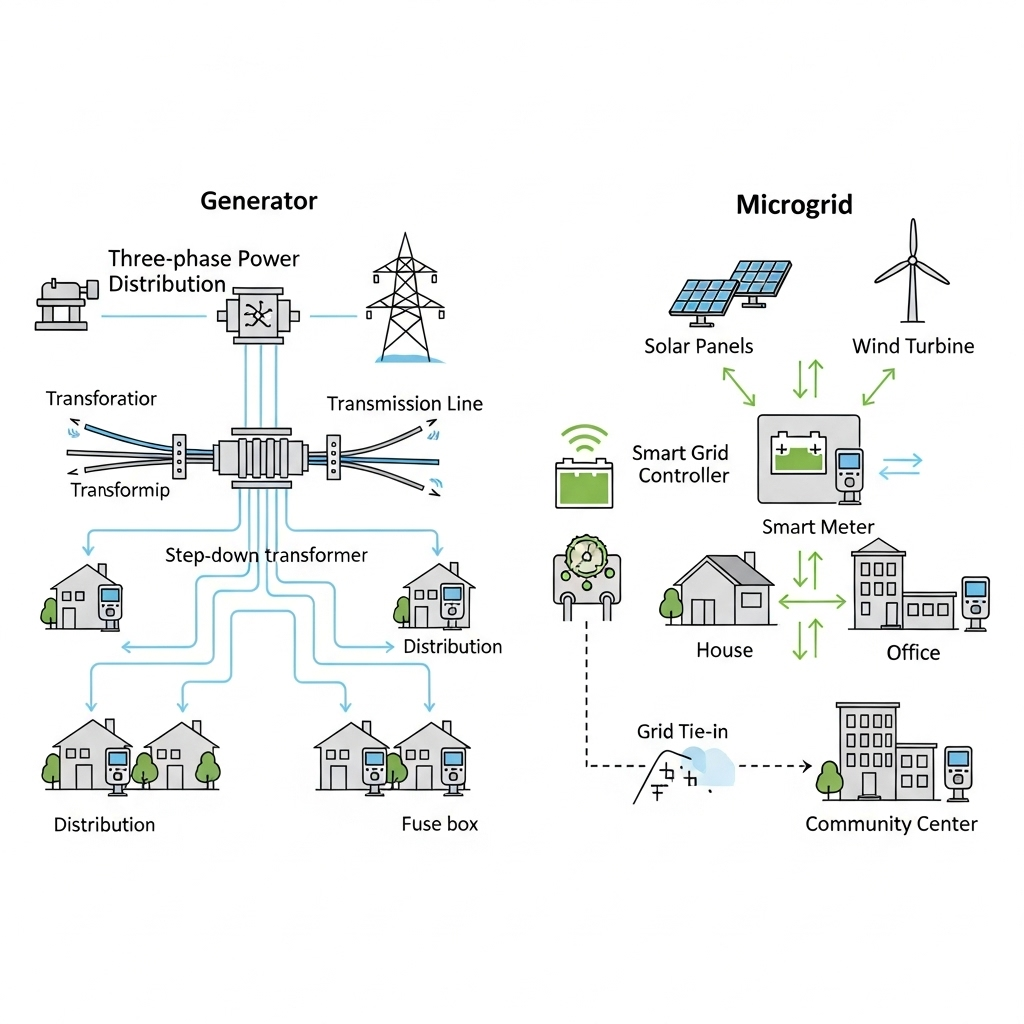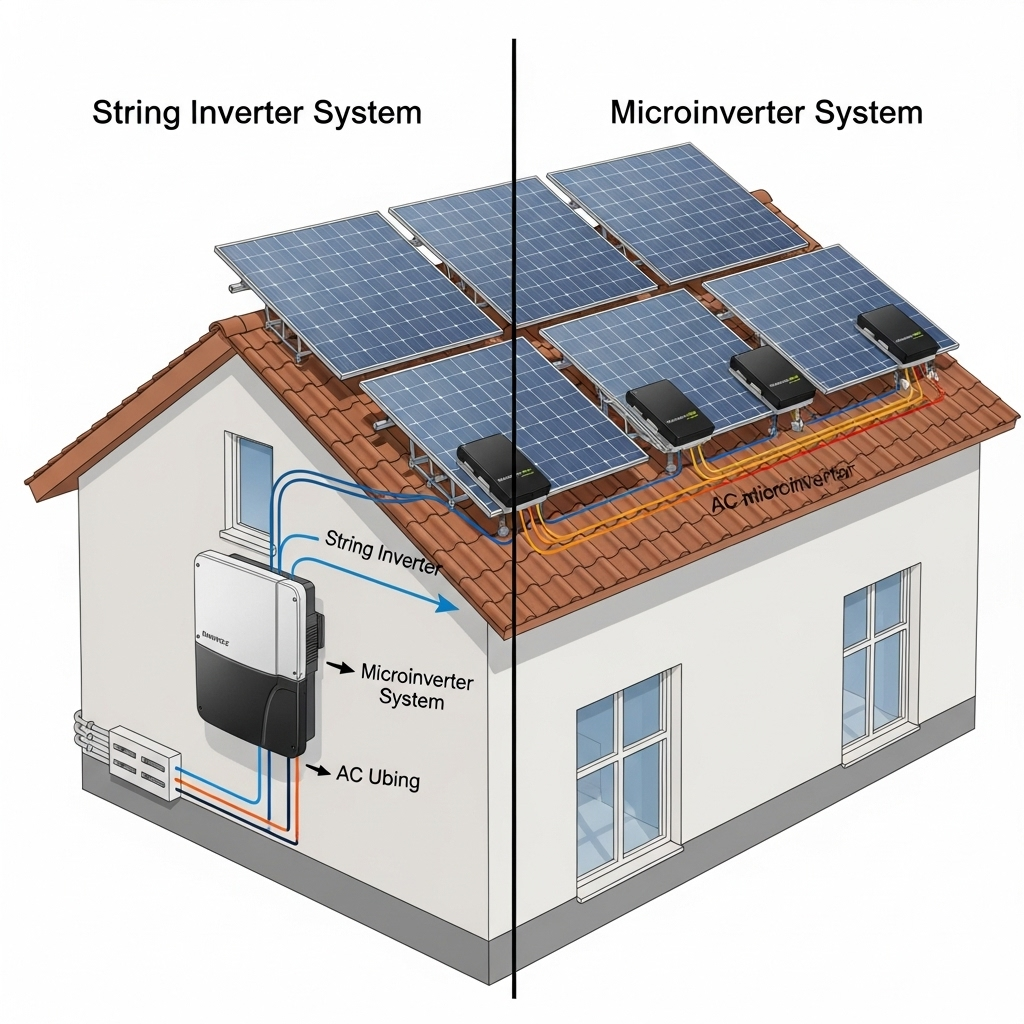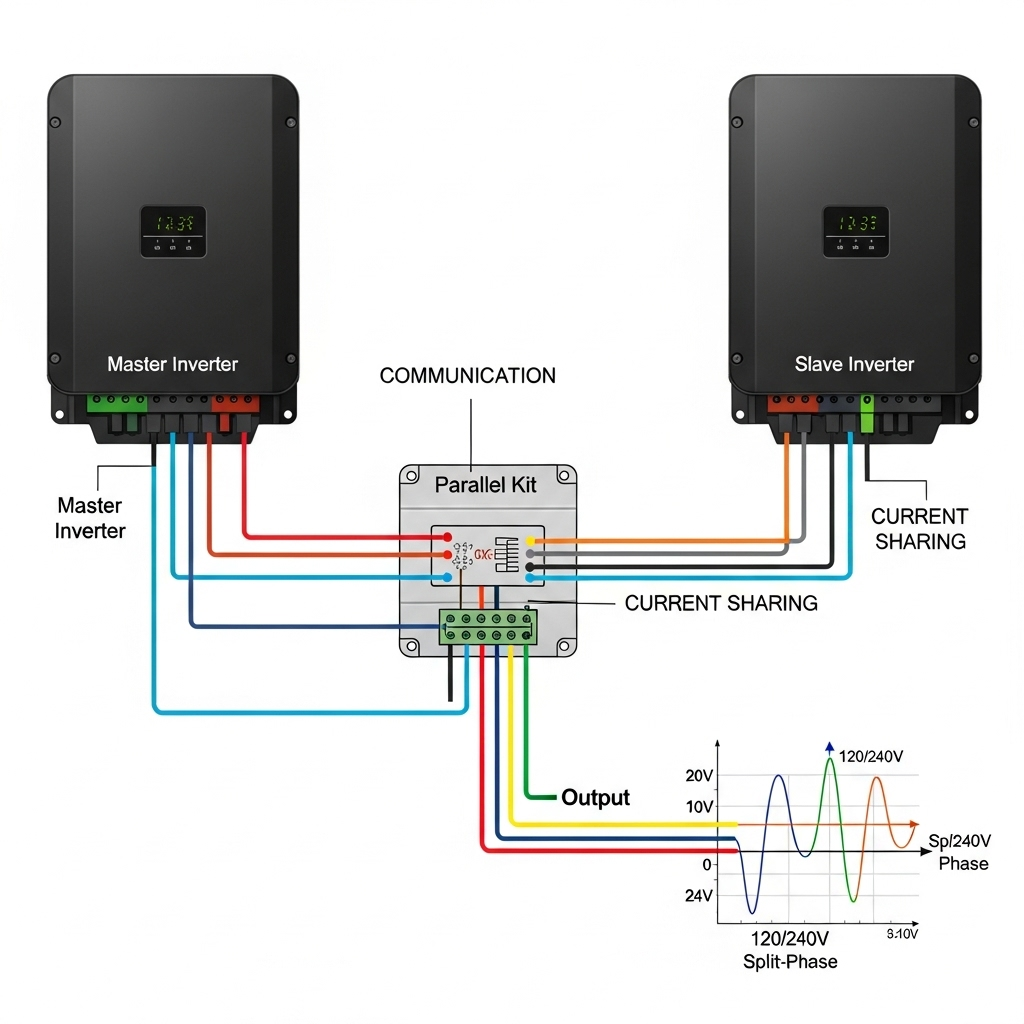One of the first big questions my clients ask when we're designing an off-grid or hybrid solar system is, "How are we going to run the well pump and the electric dryer?" What they're really asking about is 240-volt power, and getting this part right is the difference between a reliable, efficient system and a constant source of headaches. I've installed dozens of both stacked-inverter and transformer-based systems over the years, and I want to walk you through how I decide which is the right fit for a project.
The Stacking Method: Teaching Two Inverters to Dance
The most modern approach is to "stack" two identical inverters. We program one as the "master" and one as the "slave." The master creates one 120V leg of power, and the slave perfectly mirrors it, but 180 degrees out of phase. When they're synchronized, you get a clean, stable 120/240V split-phase output, just like you get from the utility.
What I Love About Stacking:
- Incredible Efficiency: This is the biggest win. There's no extra box humming away and wasting energy. You're not losing 5-10% of your precious battery power to transformer losses. For an off-grid home where every watt-hour counts, this is a huge deal.
- It's Scalable: I love being able to tell a client we can start with a single 120V inverter for their small cabin, and then add a second one next year when they build the addition and need 240V. It's a modular approach that lets the system grow with their needs.
What You Need to Watch Out For:
- Compatibility is Everything: You absolutely cannot mix and match brands or even some models from the same brand. They have to be designed to talk to each other. I've seen people try to save a buck by pairing two different inverters, and it's a recipe for instability and fried electronics.
- Setup is Tricky: The communication and programming have to be perfect. It's not plug-and-play. This is one of those areas where reading the manual carefully and having some experience really pays off.

The Transformer Method: Old School and Bulletproof
The other way to do it is with a single, powerful inverter and an external autotransformer. The inverter produces a strong 120V or 240V output, and this heavy, durable box of copper and steel creates the two 120V legs and keeps them balanced. It's a simpler, more brute-force approach.
What I Love About Transformers:
- They Are Unbelievably Robust: A transformer is a passive device. There's no software, no delicate circuit boards. They just work. I've seen them running for 20 years in dusty workshops without a single issue. For pure, long-term reliability, they are tough to beat.
- Fantastic Load Balancing: This is their secret weapon. If you have a lot of 120V loads that are unpredictable—like in a workshop where you might run a big saw on one leg and a dust collector on the other—the transformer will automatically balance the load. This prevents voltage sags and keeps everything running smoothly.
What You Need to Watch Out For:
- The Efficiency Hit: Transformers are always "on," and they have what's called an idle loss. It's a small but constant drain on your batteries, 24/7. Under load, they also generate heat, which is more wasted energy. This can be a deal-breaker for a highly efficient off-grid home.
- They Are Heavy and Bulky: A good transformer that can handle 6,000 watts or more can weigh 50-100 pounds. You need to account for the space and the structural support to mount it.
My Mental Checklist: Stacking vs. Transformer
Here's how I break it down when advising a client.
| Feature | Split-Phase Stacking | Transformer Coupling |
|---|---|---|
| System Efficiency | Higher (My preference for off-grid) | Lower (That idle drain matters) |
| Best For New Builds? | Yes, absolutely. Design it in from the start. | Less common for new builds. |
| Best For Upgrades? | Difficult, requires replacing the old inverter. | Excellent. Add it to an existing 120V system. |
| Load Balancing | Good, but relies on the inverters. | Bulletproof. Its primary job. |
| Long-Term Reliability | Good, but has more complex electronics. | Exceptional. It's a rock. |
So, Which One Wins? My Final Recommendation
In my experience, neither method is always better—it's about matching the solution to the situation.
I recommend Split-Phase Stacking for:
9 times out of 10, this is my choice for new, from-scratch off-grid or hybrid systems. The efficiency gains are just too significant to ignore over the 20+ year life of the system. It's the modern, smarter way to build.
I recommend a Transformer for:
This is my go-to solution for upgrading an existing 120V system. If a client already has a big, high-quality inverter, adding a transformer is a simple and cost-effective way to get 240V power. It's also my choice for workshops or industrial settings with really unbalanced loads where rugged simplicity is more important than peak efficiency.





Leave a comment
All comments are moderated before being published.
This site is protected by hCaptcha and the hCaptcha Privacy Policy and Terms of Service apply.